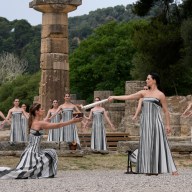One of the real perks of golf writing are the press trips to see some of the best courses and resorts in the world. Last week I spent a few days at PGA National Resort and Spa in Palm Beach Gardens, Fla.
I’ll have a full recap of the resort in a future Metro Travel section, but couldn’t wait to share some experiences from the week.
In addition to five stellar golf courses (including The Champion, which hosts the PGA Tour’s Honda Classic), PGA National is also home to a wonderful multi-pronged learning center. I had the opportunity to spend some time at the Golf Academy and during a visit to the Club Fitting Lab, I got to be the group’s guinea pig on the TrackMan, a golf radar that measures spin rate, club speed, smash factor, carry, launch angle, club delivery and more.
The trick to club fitting, which is all the rage in golf these days, is to create a baseline with your current equipment. Then, after looking at the numbers spit out by the TrackMan, a club fitter will suggest what changes you should make, if any at all. In my case, Juan Pina, club-fitting services manager at PGA National, determined that a swing fault was a bigger problem than my equipment (surprise, surprise). Based on my TrackMan stats, my swing speed is strong at 109 and my smash factor (the quality of the strike) was nearly perfect at 1.49. However, I attack the ball with a driver at a negative angle, in turn hitting down on the ball, increasing backspin, and robbing myself of distance. Hitting down on the ball is great with irons, but not a driver. All season I’ve felt like I’ve lost length off the tee, so it was great to see the stats and verify what I thought all along. A little homework tells me that flattening out my angle of attack could add a nice chunk of yardage to my drives.
Since most people who go on a golf trip are looking to cram in as many minutes on the course as possible, I asked Pina why someone would benefit from taking some time to get on the TrackMan and do a session with him.
“The game of golf,” he said, “it’s hard enough by itself to try to play it with the wrong equipment. … I went on this side of the golf industry because it’s makes me feel better than an instructor. For example, I would say that 95% of the people that come to see me leave better than they came and that’s not because they bought some new clubs, even the ones that don’t get new ones leave with information that they did not have before.”
I was feeling exactly the same way, even before he finished his thought.
“Use yourself as an example,” he said. “You at least now know that there’s something that you can do to improve your game, even without changing your driver.”
The bottom line is that there are two pretty defined schools of thought in golf right now. One that says technology and equipment can cure all ills. Another that says practice and instruction are the key to all success. But during my session with Juan Pina, I realized just how interconnected technology, equipment and technique can be.
This notion became even clearer once combined with a session at the David Leadbetter Golf Academy on the grounds of PGA National. Check back tomorrow for more on that experience.












